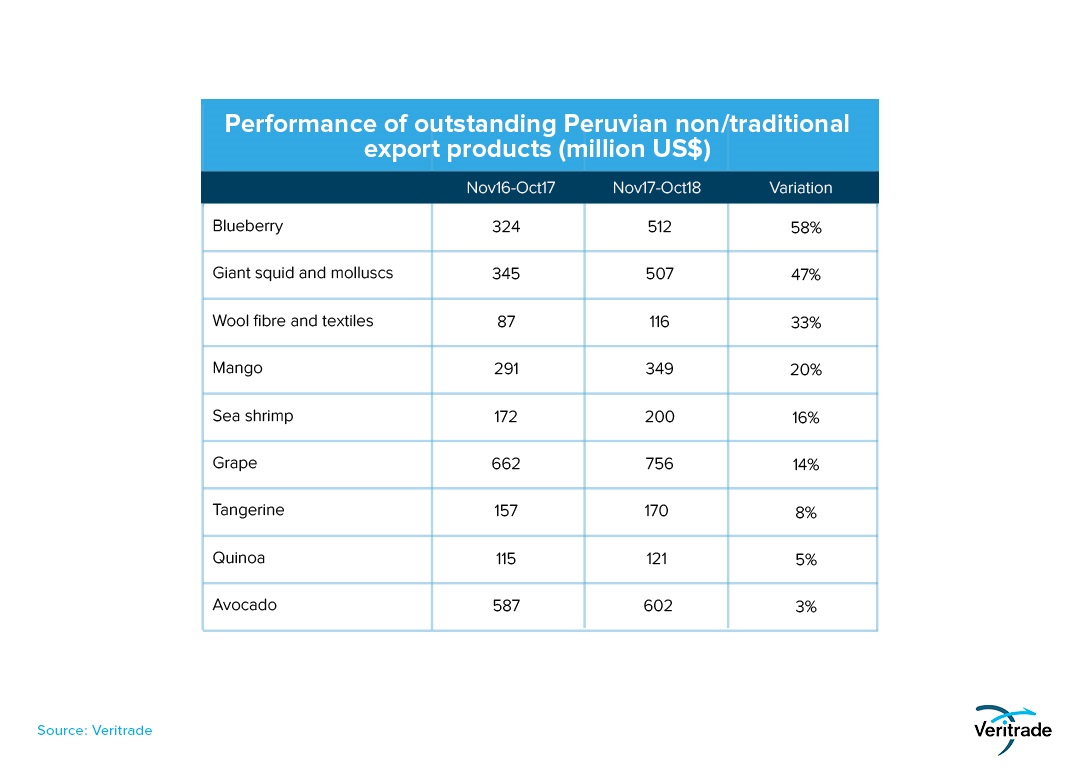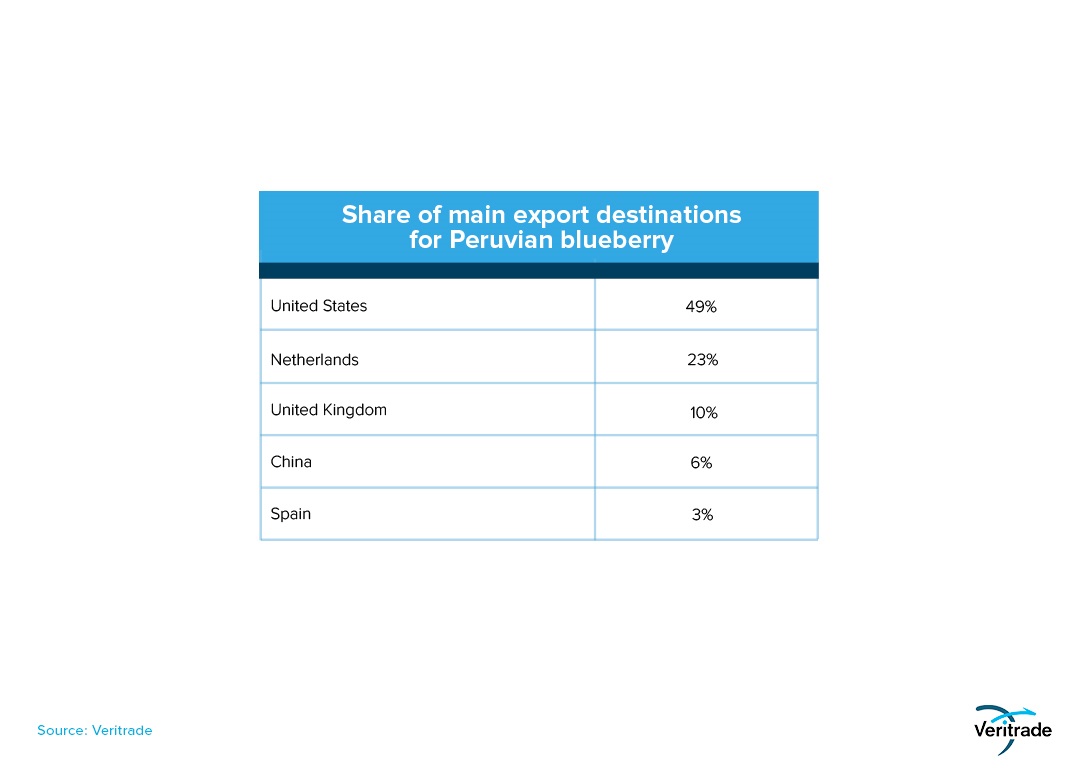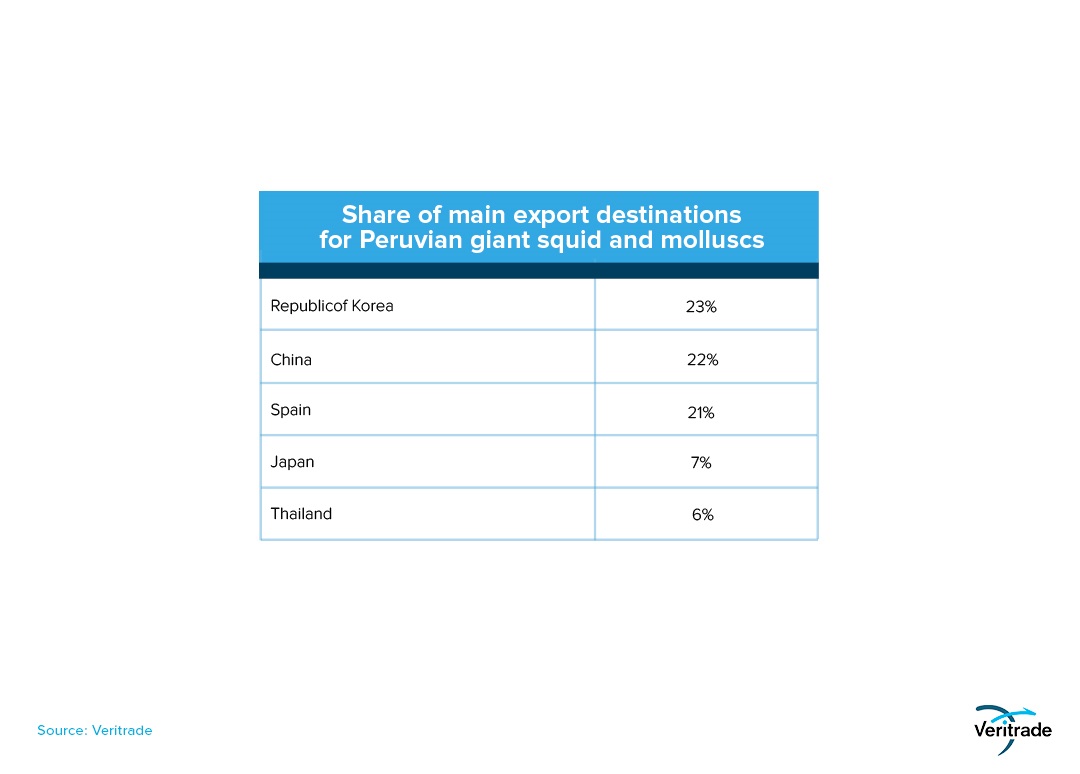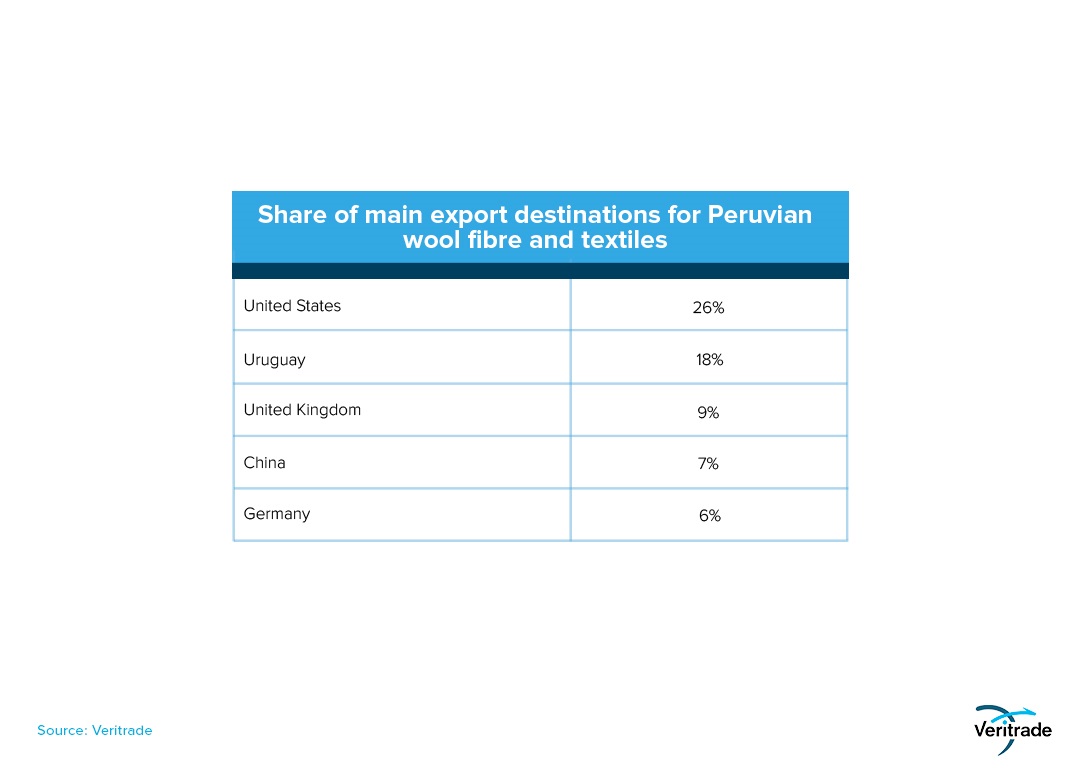Non-traditional exports from Peru stood out in 2018
Published on 22 January 2019
The conditions were used and good results were achieved in sales of agricultural products, fishing and textiles abroad.
Peru is an example of expansion of non-traditional supply in the export portfolio, based on the comparative advantages that its location and geography provide. In the period November-October 2018, the results in terms of value have been significantly positive, with expansions that even exceed 50% in products already consolidated.
The stable climatic conditions have allowed to harvest the fruits of the investment in areas of culture and infrastructure of extraction and processing. Added to this is an arduous commercial work, based on cooperation between the government and companies to obtain sanitary authorizations and take advantage of diplomatic relations to open new markets, supported by a network of free trade agreements that cover countries with which it is generated. more than 97% of bilateral trade in Peru.
Next, the most outstanding products are shown.

On the agricultural side, the expansion of production is due both to the continuous growth of products consolidated for more than a decade, such as the avocado and the grape, as well as to the rapid development of new portfolios, such as that of quinoa and blueberries. On the other hand, the climate has been benevolent for the mango, whose flowering and quality are very sensitive to the level of rainfall and variations in temperature.
It is important to note that the expansion of new products has taken place in a very diversified way, having started when Peru already had a consolidated commercial opening, and because there is demand throughout the world. As an example, the case of cranberry is reviewed in the following table.

As for the transport routes used, 92.85 of the merchandise was moved by sea, although some high-value shipments were made by air (6.9%), in order to achieve greater freshness.
Another product that benefited from the weather conditions of the sea was the squid, which together with other molluscs make up an important supply of proteins for markets on all continents, mainly in Asia. It is worth mentioning, however, that the country's potential is much greater in the case of squid, but it is underexploited due to regulatory issues. Next, the main destinations are reviewed.

96.9% of the merchandise was transported by sea due to the resistance of the products to freezing, but this was also carried to regional destinations such as Bolivia, Ecuador and Colombia, by land.
Finally, we analyze the case of a product of livestock origin: wool. The raising of auquénidos, especially the alpaca, has allowed to obtain quality wool and integrate it into the industrial chain of textile production. This, added to the commercial effort promoted hand in hand with the Ministry of Foreign Trade and Tourism through events such as Alpaca Fiesta, has made it possible to take advantage of the markets. In the following chart, the main destinations are reviewed.

The sale of Peruvian wool and fiber fabrics is diversified in all continents, and has positioned itself in markets of great size and purchasing power. It should be noted that 31% of shipments were made by air, while 65% moved by sea and 3% by road.
In general terms, businessmen are taking advantage of the diversity of resources and the geographical and climatic conditions of Peru. However, progress can be made even further if research and development continues to be promoted and regulations are adjusted in order to be able to take full advantage in a framework of absolute sustainability.
For more information about Peru's exports, you can access the Veritrade portal.
Request your free trial at: https://bit.ly/2WdUe0f